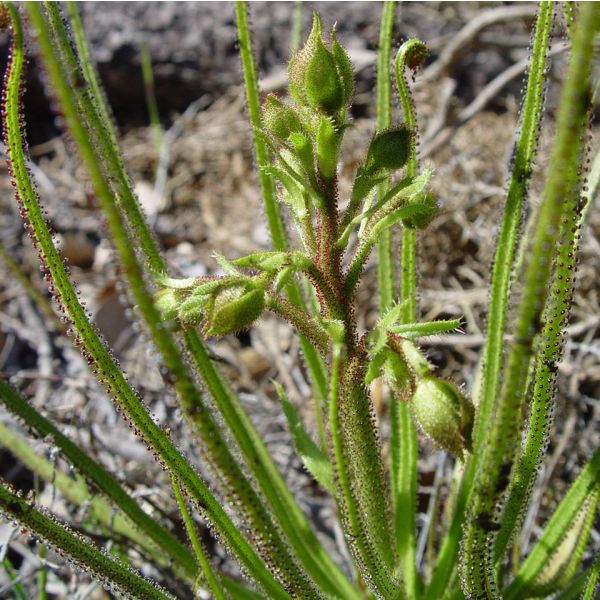Drosophyllum Lusitanicum Seeds (Drosophyllum Seeds)
Drosophyllum Lusitanicum Seeds (Drosophyllum Seeds)
Seeds from Cadiz, Spain. Perennial in nature of dry habitats. Listed among the threatened species in European Union.

Delivery
All orders shipped with UPS Express.
Always free shipping for orders over US $250.
All orders are shipped with a UPS tracking number.
Returns
Items returned within 14 days of their original shipment date in same as new condition will be eligible for a full refund or store credit.
Refunds will be charged back to the original form of payment used for purchase.
Customer is responsible for shipping charges when making returns and shipping/handling fees of original purchase is non-refundable.
All sale items are final purchases.
Help
Give us a shout if you have any other questions and/or concerns.
Email: contact@domain.com
Phone: +1 (23) 456 789
Availability: Out of stock
SKU
Drosophyllum Lusitanicum
In its native habitat, Drosophyllum lusitanicum is relatively rare, with plants growing in narrow coastal or maritime regions with regular morning fogs during Summer. Drosophyllum has been found in Portugal, Southwestern Spain and in Northern Morocco. Drosophyllum is a perennial in nature of dry habitats. It is listed among the threatened species in European Union. Drosophyllum lusitanicum is shrub-like carnivorous plant that can grow up to1.5 meter in height, but is usually shorter, about 40 cm and has a fast growth. The stem is 5-25 mm thick and creeps along the ground when it becomes longer. This plant may be grown successfully in pots on the windowsill receiving full sunlight.
Compared with other carnivorous plants, it is one of the most successful hunters in terms of quantity of captured prey, and all with absolutely passive primitive adhesive traps. Drosophyllum is interesting in that it has two types of glands on the leaves; the huge stalked glands that attract and trap prey and the digestive glands.
Luring is accomplished by the sweet, honey-like odor of the mucilage, detectable even by humans. Production of the mucilage for trapping prey is so intense that slime often drips from the leaves. This glue sticks to the insect, covering it's body and suffocating it. Sessile glands along the leaf secrete acids and enzymes which dissolve the insect. The leaf then reabsorb the nutrient rich fluid. Digestion of prey is very rapid, being complete within several days.
The bright yellow, regular, quinate flowers can be up to 4 cm in diameter and are borne in groups of 3-15. Rarely do the flowers grow separately. The self-fertile flowers open gradually for several hours during the day. In its native habitat, flowering occurs between February and May, sometimes later. In cultivation, Drosophyllum can flower all year round, mostly at the end of Winter and during early Spring. The plants usually start to flower from 6-9 months when they are 40-55 cm in diameter. In exceptional cases, the plant starts to flower when it is only two months old.
The narrow, triangular leaves typically reach lengths of 10-25 cm with a width of 2.5 mm. The leaves can be longer in cultivation. Ten or more needle-like leaves are generally found per apical rosette. The rosette of leaves are typically 40 cm in diameter. With a little imagination, we see why the English common name "Dewy Pine" is used for this plant, as it looks very much like a small pine.
Hardiness zone 9, (-5øC/25øF) in Winter. Drosophyllum lusitanicum loves full sunlight all year round. The best growing conditions for Drosophyllum Lusitanicum is between 40øF and 75øF and a range of 5-15øC in Winter. Drosophyllum Lusitanicum should have humidity no less then 50%, but permanent high air humidity is bad. Outdoor plants are brought inside with the first frosts, but will survive even light frosts without damage, about -7øC. The plants spend their dormant period in a cold and bright room. The typical heated home is too warm in the Winter. During the dormant period the planting medium must be drier. Before Drosophyllum are winterized, it beneficial to remove all old dry leaves, which could become a source of rot and rust infection.
Drosophyllum is one of the few carnivorous plants to grow in dry, alkaline soil. Use an alkaline mix of perlite, sand and vermiculite, or a mixture of 1 part peat moss and 3 parts sand. You should plant your seeds in a pot that they will spend there whole life in. Disturbing the roots often lead to death of the plant. Water must be distilled or rain water because they do not tolerate city or hard water. This carnivorous plant likes it on the dry side.
| Common name | Portuguese Sundew |
|---|---|
| Species | Drosophyllum lusitanicum |
| Germination | First, scarify the seeds. Sow the seeds at 1/4" deep in your moist but not soaked soil mix. Use a mixture of 1 part peat moss and 3 parts sand. Place the pot in an area with bright indirect sunlight and keep the temperature between 21øC/70øF, 27øC/80øF. Germination usually occurs in 3-4 weeks, but it can be prolonged up to several months, don't give up. |
| Scarification / Stratification | This will make the seed coat tiner. Place the seeds on any soft, non-coated paper. Look at the seeds with a magnifying glass or hand lens to see what they look like before scarification. Then lightly roll the sand paper over the seeds. The soft paper will help hold the seeds and the sand paper grit will nick or otherwise remove some of the seed coat. Don't press at all, just use the weight of sanding block. Look to see if the seeds are losing their shine and if the paper is starting to look a little dirty. |
| Price View | Price Range |

